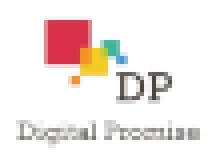As a new teacher, Shelby Womack was teaching a lesson about simplifying fractions to his fifth grade class when he grew concerned about answers from students that didn’t make sense. Although they had covered the vocabulary of numerators and denominators in the previous days, there was clearly a gap somewhere. Equipped with just a white board and an Expo marker, Womack decided to poll his students: “Raise your hand if you think the numerator is the one on top. Okay, now raise your hand if you think the numerator is the one on bottom.” He diagnosed the gap in understanding and decided to take a few steps back rather than push ahead with the lesson on simplifying to the lowest common what’s-it-called.
Fast forward to today. Womack is the Executive Director of Technology and Digital Learning at Stephenville Independent School District in Texas. His role is different; the tools and technologies available to teachers are different; but his underlying motivation is the same: he cares deeply about student-teacher relationships and building effective instruction on a grounded understanding of each student’s needs.
From his position at the district office, Womack’s goal is to make data-informed instruction a simple, common sense approach for all teachers. Yet doing that is anything but easy when you add formative and summative assessments, student information systems, and reports from edtech products—in addition to the tried-and-true classroom poll of ages past. It’s easy to get lost in all that data. That’s why Womack is an advocate of data interoperability — the seamless and secure exchange of data between applications — to improve student outcomes.
Prioritizing Data-Informed Instruction
Consider the challenges of small group instruction. How can teachers do that effectively without access to relevant data? “It’d be a waste of time to do the original lesson over and over in small groups. You have an opportunity now to choose who comes to each group, and have the lessons be based on each group’s needs,” Womack explains. “But to do that, you need to understand where students are so that you can meet them where they are.”
For Womack, that’s where data interoperability kicks in: better access to data leads to better informed instruction. When teachers can see data from the various tools and systems that they use in one place, they are better able to respond to their students’ needs. “We do a lot of remediation — but we don’t do a lot of data-driven instruction,” he says. “If we could flip that, we would not only see high scores, but we’d see growth. If we can use data more effectively, we can stop teaching to a non-existent middle.”

Achieving this goal is both a technical and nontechnical challenge. It takes a coordinated effort from IT staff, edtech vendors, teachers, and curriculum directors to access and use data more securely and effectively. It will take years of work to realize the dream of data interoperability and make data-informed instruction the norm. But Womack isn’t waiting.
Putting Data Interoperability into Action
Stephenville ISD and three other districts from the Digital Promise League of Innovative Schools spent the 2018-2019 school year in a Challenge Collaborative to build prototypes that could demonstrate the value of data interoperability for improving teaching and learning. This project brought together a cross-sector team of designers, technologists, and researchers to support school districts in achieving identified interoperability goals. Over the course of 12 months, this team followed an iterative research and development (R&D) process that was centered on the needs of teachers and the effective use of assessment data.

To see what the road to interoperability looks like in school districts across the United States, take a deep dive into the Digital Promise Innovation Portfolios platform with Stephenville ISD, San Diego County Office of Education, Uinta School District #1, and Vancouver Public Schools.
The R&D process moved back and forth between administrators and teachers, balancing the desirability of the emerging prototypes and the viability of their implementation. Focus groups yielded needs statements, then designers created mockups to address those needs statements. The cross-functional teams iterated and iterated, working together toward the vision of data interoperability that could support data-informed instruction. The mockups served as a common object that could cross boundaries: the technical team could validate their feasibility, the UX/UI team could iterate on the design, and the teachers could steer the group toward creating a tool that would be valuable to end users.
R&D Process
| Participants | Goals | |
| Phase 1: Challenge Scoping |
• District leaders • Technology experts |
• Identify a specific needs area • Confirm relevant applications, instructional tools, and data sources • Recruit a group of educators to participate in the R&D process |
| Phase 2: Educator Focus Group |
• Educators • District leaders • UX/UI designers |
• Establish setting: where and why are educators using data • Investigate the pain points and challenges? • Reach consensus on a single “needs statement” |
| Phase 3: Technical Feasibility Check |
• District leaders • Technology experts |
• Review first draft of mockups • Validate feasibility of mockups given existing data |
| Phase 4: User Acceptance Testing |
• Educators • District leaders • UX/UI designers • Technology experts |
• Review updated draft of mockups • Gather feedback and guidance from end-users |
Stephenville’s team of teachers articulated a needs statement that focused on their “Data Days” in-service meetings, and their resulting mockup now serves as a reference image — a sort of North Star — that guides the district’s data interoperability efforts.
So, does this mean that data interoperability is a reality in Stephenville, Texas? Not quite. It’s a long road, and it takes a sustained, coordinated effort to get there. But as long as teachers’ needs stay at the center, it’s a journey worth taking.
“Focusing on data standards and the utilization of them has kind of become our important project. In order to see that dashboard be realized, those third parties have to be leveraging standards, and currently they’re not. But keep momentum going,” said Womack.
In the final installment of this series, we’ll share reflections and helpful pointers from members of the Data Interoperability Challenge Collaborative, resources for advancing data interoperability, and other opportunities to take action.
Featured League of Innovative Schools districts
• Stephenville ISD / @stephenvilleisd
The “Why” Behind the Work:
- To empower educators to use data to inform instruction
- To create efficiencies when gathering data from disparate sources
Learn how SISD is building a foundation for teachers to inform instruction with data.
• San Diego COE / @SanDiegoCOE
The “Why” Behind the Work:
- To provide a more consistent, supportive school experience for transfer students
- To improve literacy outcomes for our most marginalized
Learn how the SDCOE is creating data cohesion for students across a county.
• Uinta County School District #1 / @UCSD1
The “Why” Behind the Work:
- To create a data driven culture to meet individual student needs
- To improve student data security and privacy
Learn how UCSD #1 is designing the data dashboard of their dreams.
• Vancouver Public Schools / @VancouverSD
The “Why” Behind the Work:
- To provide teachers with a more effective, unified look at student achievement
- To streamline redundant internal processes
Learn how VPS is Laying the foundation for a unified look at student achievement.



